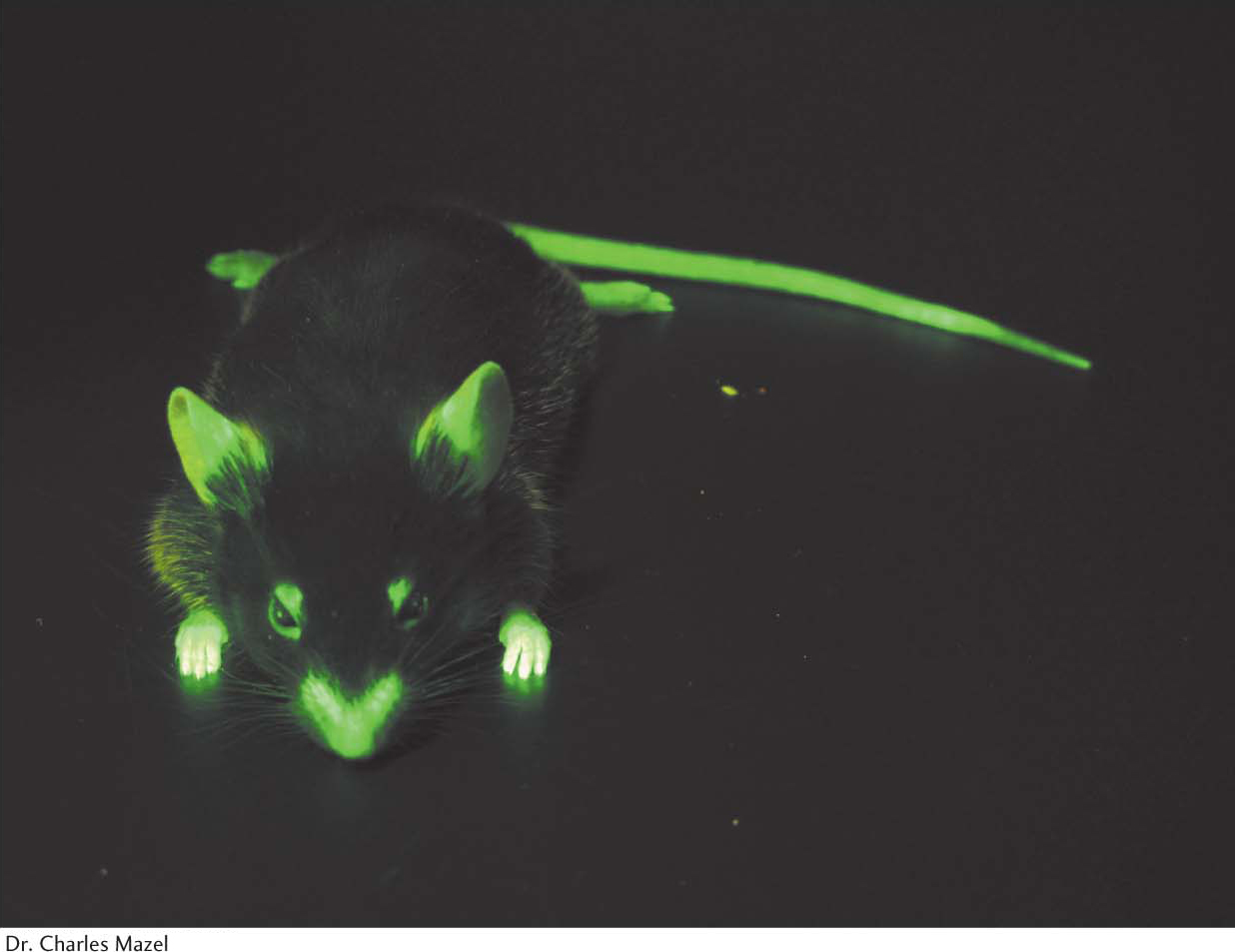
Inherited diseases often result from a defective or missing gene. A goal of biochemistry is to eventually treat such diseases by replacing the defective gene with a functioning version. In the example of gene manipulation illustrated here, a recombinant gene consisting of the gene for the cytoskeleton protein actin linked to the gene for green fluorescent protein was inserted into a mouse embryo. The fluorescence photograph of the mouse shows the location of green fluorescent protein (GFP) attached to actin molecules. Hair has no actin and thus does not fluoresce.
We focused on protein purification, immunological techniques, and amino-acid-sequence determination when we last explored experimental techniques in Chapter 5. Here, we will expand our repertoire of procedures to include those used with nucleic acids—in particular, the techniques of recombinant DNA technology. We will continue our study of the estrogen receptor, a transcription factor that regulates certain genes in response to the presence of the steroid hormone estradiol. Here, we will use the purified receptor protein to isolate DNA encoding the receptor protein, to express the receptor in bacteria, to investigate the nature of its gene, and then to find out whether there are relatives of this protein in other organisms or similar proteins in the same organism.
